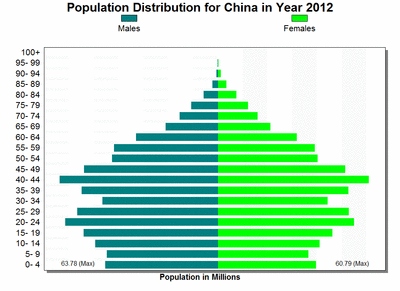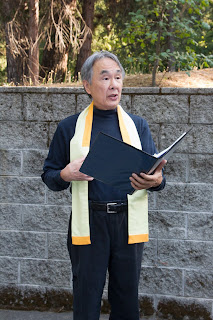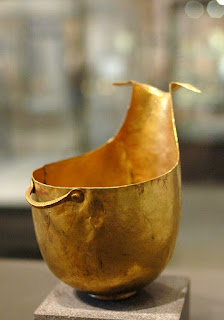 The debate around this Chinese policy has centered, among Westerners, on issues of human rights and reproductive freedom. I have a j'ne sais quoi feeling about this.
The debate around this Chinese policy has centered, among Westerners, on issues of human rights and reproductive freedom. I have a j'ne sais quoi feeling about this.Among Chinese policy makers, one suspects, it has to do with how the nation proposes to feed its people and, lately, how its society will take care of its aging population. The chart to the left of China's estimated population by age group shows the stark truth that in 30 years, those currently aged 40 and above will be much larger than those currently aged 70 and above while their replacements, those currently aged ten to thirty-nine will be much smaller. The math is inexorable and the social prospects grim. A much smaller working population will have to support a much larger number of seniors.
[An acknowledgement is necessary: The image is by the Pardee Center for International Futures [CC BY-SA 3.0 (http://creativecommons.org/licenses/by-sa/3.0)], via Wikimedia Commons.]
There is another dimension of this issue that has not surfaced but which is alluded to in a passage in The Ninja and the Diplomat, vol. 2 of The Chinese Spymaster, expected to be published in September this year. One character addressed another as "uncle" as respectful Chinese traditionally did (perhaps still do) when speaking to someone older and/or of higher status. The man thus addressed is touched because -
"As an unintended but ineluctable consequence of the one child policy, he and his wife, like most of his generation and those succeeding, consisted of only children; hence his family included no aunts or uncles, no cousins, and no nieces or nephews. The Chinese family had lost an immeasurable dimension of comfort."








